NVIDIA GeForce 2 GTS Roundup - July 2000
by Matthew Witheiler on July 10, 2000 4:39 AM EST- Posted in
- GPUs
Creative Labs 3D Blaster Annihilator 2- Driver Pictures- Fast Trax
Taken from our Creative Labs 3D Blaster Annihilator 2 Review
Unique for Creative Labs, in fact unique for any video card we have seen, the 3D Blaster Annihilator 2 actually ships with 2 driver sets: the FastTrax drivers (described in this section) and the 3D Blaster Control drivers (described in the next section).The FastTrax drivers are for those users "concerned with having the control panel flexibility and the fast development offered by FastTrax with Display Director ." Basically, the FastTrax drivers are the most recently updated NVIDIA drivers packaged into a unique interface designed by Creative Labs. This interface, which is more thrown together than the elegant 3D Blaster Control drivers, maintains the same functionality as the reference drivers but also adds a few additional features. The FastTrax drivers are designed around the idea that the backend of the drivers can be updated almost immediately after new NVIDIA reference drivers are released while still maintaining the custom interface. Basically, FastTrax updates will be frequent and match the pace of NVIDIA driver updates simply because the FastTrax system is easy for Creative Labs to update.
The drivers contain pretty much everything we are used to seeing in the NVIDIA reference driver set (OpenGL, D3D, and color tweaking screens), but Creative Labs also throws in a few extra utilities. We were pleased to find an overclocking screen (albeit it would only allow for a 220 max core speed, 30 MHz shy of what were able to get the card to) as well as an AGP tweaking screen. On the bright side, a hidden feature from Creative Lab's allows the user to set the maximum overclocked speed by double clicking on the end of the clock sliders, meaning that that 220 number can be pushed as high as 250.
The main control screen.
By double clicking on the sliders the maximum overclocked speed can be increased to 250 MHz. A nice feature.
A standard D3D screen, with the same functionality as the reference drivers.
The D3D AntiAliasing screen.
The OpenGL screen once again offers the same functionality as the reference drivers.
An interesting feature: An AGP option screen similar to the advanced options of PowerStrip.
Color correction for the card.
Video overlay screen for changing the quality of images from video playback.


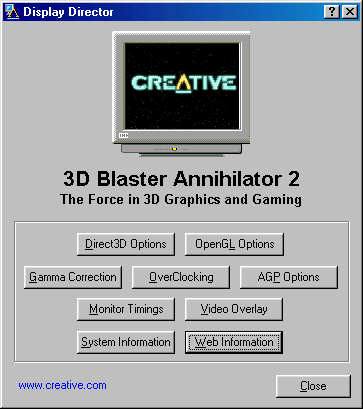
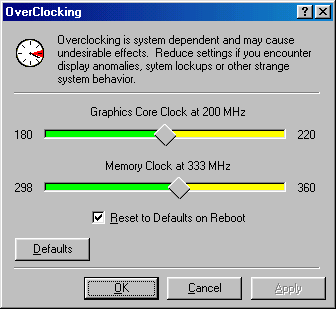
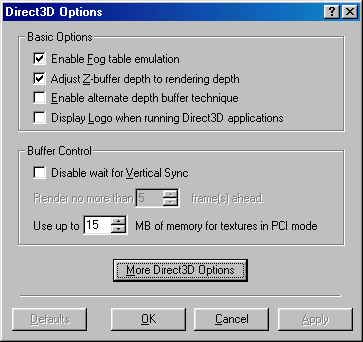

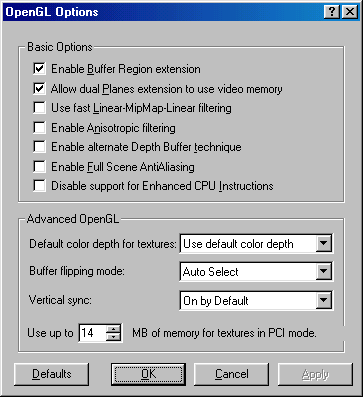
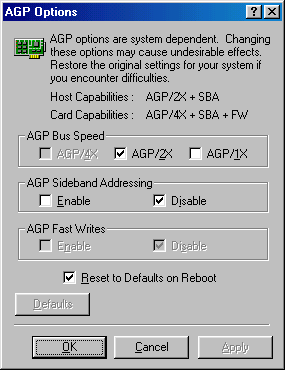
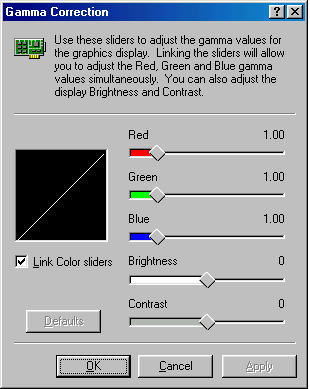
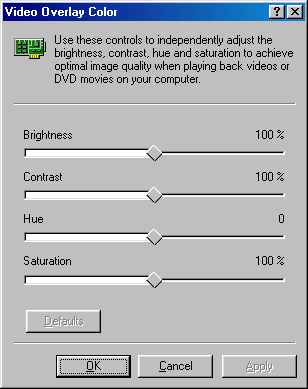








0 Comments
View All Comments